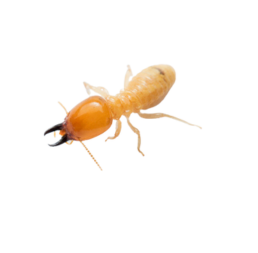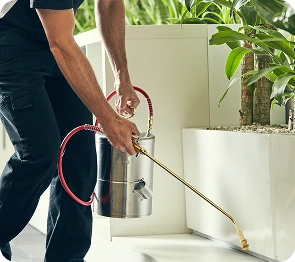Termites


Termites are a major threat to Australian homes and can cause extensive structural damage long before anyone realises, they are present.
Unlike visible household pests, termites operate in silence within walls, floors and timber structures. If you suspect termite activity, Competitive Pest Control Services can inspect your property, provide a free quote and identify all affected areas. Once activity is confirmed, we apply a targeted treatment plan designed to eliminate termites at the colony level and protect the property from ongoing infestation.
History
Termites have existed for more than 120 million years, adapting to Australia’s warm, humid climate. Subterranean termites build mud tunnels to move undetected from the soil into timber, flooring and internal wall structures. They eat continuously and can hollow out timber from the inside, leaving only a thin painted surface. Because the damage is hidden, homeowners usually discover the problem when costly structural repair is already required. Termite damage is rarely covered by insurance, so proactive inspections and professional management are essential.
How to Identify Termites
Termites are sometimes mistaken for ants, but the difference is clear when you know what to look for. They are soft-bodied and creamy white to light brown, with a straight, thick body shape and straight antennae. Ants have narrow waists and bent antennae, whereas termites do not. Termites avoid open air and often remain hidden inside timber or walls, so homeowners typically notice the results of their feeding rather than the insects themselves.
Common Termite Species
-
Subterranean termites — creamy white, build mud tubes, attack structural timber, floors and frames. Biggest threat to homes.
-
Drywood termites — live inside dry timber and furniture. Look for pellet-like droppings (frass).
-
Dampwood termites — larger and found in damp or decaying wood, often where leaks or moisture exist.
Signs of Infestation
Hollow or soft timber, blistering or bubbling paint, and wood that breaks or crumbles easily are all indicators of termite activity. Mud tubes may appear along walls, brickwork or foundations, serving as protected passageways between the nest and food source. During swarming season, discarded wings may accumulate around doors or windows, showing that termites are establishing new colonies. Drywood termites may also leave behind tiny wood-coloured pellets resembling sawdust. Any of these signs indicate termite activity and require immediate attention.
Termite Treatment
Effective termite treatment must eliminate the entire colony — not just the termites you can see. Surface sprays may kill visible insects, but they don’t reach the queen, so the colony continues to feed and spread. Competitive Pest Control Services uses advanced baiting systems and soil treatments designed to target termites at their source. Termites feed on the bait and carry it back to the nest, leading to full colony elimination. Soil treatments create a protective barrier around the property to stop new termites entering. Follow-up visits may be needed to monitor activity and ensure complete eradication. All work is carried out in accordance with Australian Standard AS 3660

